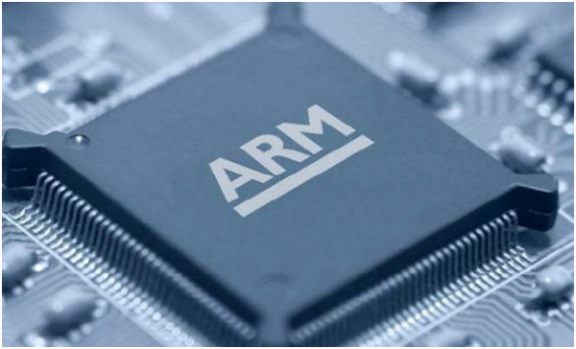Nvidia Reportedly in ‘Advanced Talks’ to Acquire ARM

Nvidia, the global No. 1 graphics processing unit (GPU) producer, is reportedly in talks to acquire ARM.
The global semiconductor ecosystem is jolting again on news that Nvidia, the global No. 1 graphics processing unit (GPU) producer, is moving to acquire ARM, the world’s top-ranked semiconductor design company.
Samsung Electronics has plenty to ponder when Nvidia takes over ARM as it relies heavily on ARM for design of smartphone APs and is an important customer to Nvidia.
Nvidia is reportedly in “advanced talks” with SoftBank to buy ARM in a deal worth over $32 billion, according to Bloomberg. A deal could arrive “in the next few weeks,” although nothing is finalized yet.
SoftBank has put ARM up for as it is in difficult financial conditions. It posted an operating loss of 961.5 billion yen in 2019. SoftBank holds a 75 percent stake in ARM with the remaining 25 percent held by Vision Fund, a subsidiary of SoftBank. Softbank spent US$32 billion to acquire ARM in 2016. At the time, Softbank was criticized for “causing bubbles” as the acquisition price was about 18 times ARM’s annual sales.
Nvidia is leading the global artificial intelligence (AI) ecosystem with the diffusion of general-purpose computing on graphics processing units (GPGPU) technology, which maximizes computing power by deploying GPUs in parallel. Nvidia’s market capitalization has recently eclipsed that of Intel, the number-one leader in the global CPU market. If Nvidia secures CPU technology by acquiring ARM, some experts predict, it will be able to get the lead in the race to develop future semiconductors. ARM has been leading the trend of the mobile semiconductor market with its low-power semiconductor design technology that simplifies semiconductor design commands.
Industry insiders are concerned that if Nvidia succeeds in acquiring ARM, it may choose to operate patents in a closed manner or receive high patent fees.
Samsung Electronics has been striving to strengthen its competitive edge in mobile APs to attain its goal of becoming the No. 1 company in the system semiconductor sector by 2030. Yet if Nvidia acquires ARM, it may have to make a change in its roadmap. Samsung Electronics stopped the Mongoose Project aimed at developing its own CPUs for mobile devices in November 2019 and decided to develop ARM-based CPUs. With respect to GPUs for mobile devices, Samsung Electronics is working with AMD, a rival of Nvidia, to upgrade its technology.
However, Samsung Electronics may be forced to start manufacturing its own APs by utilizing RISC-V(5), an open source-based semiconductor design structure, or purchase third-party APs in the worst case scenario. Samsung Electronics has experience in developing a 5G radio-frequency integrated circuit (RFIC) using RISC-V.
Yet some analysts dismissed the possibility of Nvidia using ARM patents as a weapon. “In the current mobile AP ecosystem, fabless companies including Samsung Electronics use ARM’s patents at reasonable prices,” an industry insider said. “This is why the current ARM-centric ecosystem is maintained. Furthermore, RICS-V technology’s competitiveness has been improving, although it still has problems regarding security and debugging.”
Above all, industry insiders believe that it will be difficult for Nvidia to acquire ARM. This is because ARM’s price four years ago (US$32 billion) is too high compared to its sales of US$1.89 billion in 2019. And it will not be easy for Nvidia’s takeover of ARM to get approval from related governments, as was the case with Qualcomm’s failed attempt to acquire NXP in 2018 due to Chinese authorities’ opposition.